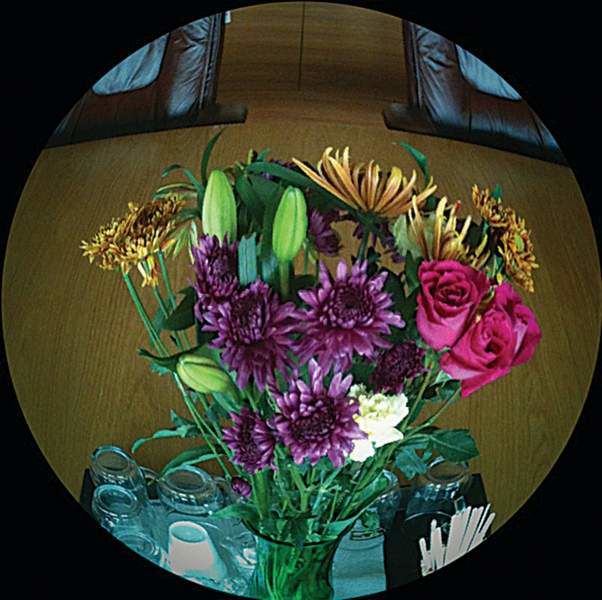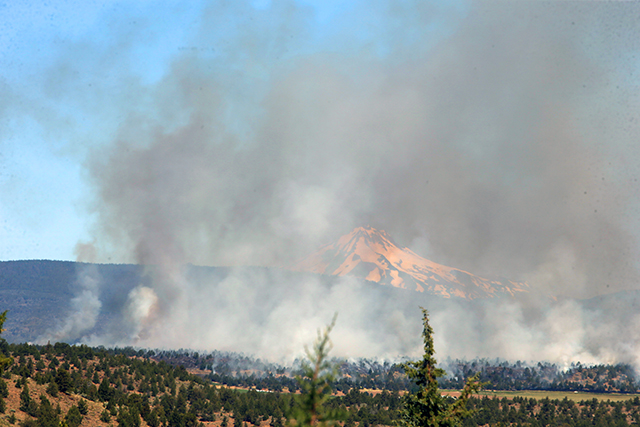Smartphone or point-and-shoot?
Published 5:00 am Wednesday, October 26, 2011

- iPhone 3GS with Camera Bag app Fishey.
The meteoric rise of the smartphone has single-handedly put a number of devices on an endangered species list: The Flip video camera. The day planner. The alarm clock.
Some think the digital point-and-shoot camera might soon be next.
More than ever, people are turning to their smartphones to snap pictures, tweak the images and email them to friends. As of April, the iPhone 4 was poised to become the No. 1 camera used for images posted on the social photo website Flickr.
But it’s too soon, experts say, to discount the point-and-shoot. Some models have functions that surpass the capabilities of even the best smartphones.
Also, DSLR cameras — short for digital single-lens reflex — remain the standard for top-quality images. They are, as one photographer said, “the big-boy camera.” Experts said that will not change anytime soon. For the rest of us who want a high-end digital camera, some DSLR models are now dropping in price.
If you’re considering whether to invest in a camera, think about what features are most important to you. Then, if you’re not in the market for a big-boy model, consider whether a point-and-shoot fits your needs or if it’s possible to meet them with your next smartphone upgrade.
Smartphone strengths
Last week, when Bend photographer Jonathan Kingston packed his bag to teach at a multiday photography workshop in Hawaii, one of the most important pieces of gear he took with him was his iPhone 4.
Kingston, a National Geographic Image Collection photographer, has taught at the workshop for years. This year, he said, the workshop will, for the first time, spend an entire day on iPhone photography.
“It’s really exciting. It brings all the fun back into photography,” Kingston said. “There are thousands of photographic apps that can replicate what you can do in Photoshop and others that can go beyond what you do in Photoshop.”
Smartphone cameras have improved rapidly. The best of them now include sharper image sensors, high-grade lenses, auto focus and brightness controls. Flash is also now a feature on some of the newest models.
For resolution, a number of smartphone models now offer 8-megapixel cameras. For context, note that Consumer Reports magazine in reviewing phones said a camera of 3 megapixels or higher is the starting point for attempting to print what you shoot.
Of course, one of the most appealing aspects of smartphone cameras is their flexibility.
Sharing photos without ever plugging into a computer, said Scott Everett, product manager for camera review website Digital Photography Review (dpreview.com), is fast becoming an expected feature. Yet Web connectivity has yet to move to low-end, point-and-shoot models.
“We’re not seeing anytime soon an ability to share with your point-and-shoot camera,” he said.
Ben Moon, a professional photographer based in Portland and Bend, said he uses his iPhone 4 when he doesn’t want to drag out his larger camera. Moon works for publications like The New York Times and Outside magazine and shoots advertising photography for clients like Patagonia and Keen.
“There’s no pressure in experimenting,” Moon said.
“I can make an image, take two minutes to edit it and then post it,” he added. “I’ve posted things on Facebook that people think I’ve shot with my SLR.”
And as Moon and Kingston said, the best camera is the one you have with you. Most people rarely part from their smartphones.
“I think that’s what makes the iPhone so special,” Kingston said.
Apple vs. Android
While Kingston is admittedly biased in favor of the iPhone, there is disagreement in the photography community over whether it’s Apple or bust.
Some say not all smartphone cameras are equal, even when they have the same features listed. Kingston said the 8-megapixel cameras on some iPhone models produce images that in his opinion are less grainy than 8-megapixel Android cameras.
He cites how densely the light sensors are placed within the camera as the reason.
“At this point,” Kingston said, “I feel like it’s an iPhone or it’s go back to a point-and-shoot.”
Yet Everett at DP Review said there are Android smartphones that also perform well.
“It’s argued by some that the Samsung Galaxy S2 is better than the iPhone 4S,” he said. DP Review is presently testing the two phones and will publish a review.
“With almost any manufacturer, you’re going to find a comparison to the iPhone or Galaxy,” he added.
Everett also noted that while some, like Kingston, cite internal differences in the phone cameras, smartphone manufacturers disclose little about how their technology works so it’s difficult to compare with certainty.
Kent German, senior editor for CNET, a website that tracks and reviews technology, said Apple’s devoted following is in part because of its large number of photography apps available.
Playing with apps is one of the strongest appeals of smartphone cameras, Moon said. He has tried about 50 different photography apps on his iPhone 4.
“It’s amazing what you can do on a $5 app,” he added, “for what you would have spent $500 for on your laptop.”
Smartphone drawbacks
Despite their pluses, smartphones have yet to match some of the functions available on basic point-and-shoot cameras.
The ability to better capture subjects in motion or low light are two remaining strengths of even low-end point-and-shoots.
Some newer smartphone models now have a flash, so the ability to photograph low light is already improving. But Everett said as far as he knows, there isn’t a way to better capture motion on a phone. That’s because smartphone cameras don’t have any adjustment for shutter speed.
“Anything with much motion, you’re not going to make a great photo,” Kingston said.
Basic point-and-shoot cameras usually have a mode for action shots, Everett said. A DSLR camera is still the best way to capture motion like your child’s soccer game, but a point-and-shoot might do fine when photographing a squirmy toddler.
German said zoom is also one feature that still functions better on point-and-shoot models. Some smartphone cameras have a digital zoom, but he said none have an optical zoom.
In a digital zoom, the camera crops the image, makes the cropped area bigger and then adds pixels to the image to fill out the photo, according to Kodak.com. It means the subject appears closer in the image but it’s of lower quality. With an optical zoom, the lens extends to magnify the subject and the overall quality of the image remains intact.
Kingston said there are now exterior attachments for iPhones in which you can use lenses like a telephoto on the exterior. But he feels at that point, you might as well use a DSLR camera.
German said a DSLR or point-and-shoot might still be what you want to chronicle your vacation or your son’s school play. But a smartphone camera will serve you well for other circumstances.
“It can’t hurt to have a better camera,” he said. “But I think in a lot of cases, your phone can do just fine and replace a point-and-shoot.”
Kingston added that some DSLR cameras come in very small sizes with great quality. He cited the Micro Four Thirds system, used in some models by makers like Panasonic and Olympus, as an example.
Yet he predicts that smartphone cameras will only continue to become better.
“Give it one or two years,” he said, “and we’ll see.”
Research your options
For detailed information about both digital point-and-shoot cameras and smartphone cameras, check out the following websites:
• Reviews.cnet.com: This site offers all things tech, including reviews. Its parent company is CBS.
• Dpreview.com: Until the last few years, this site focused on DSLRs and point-and shoots. Now it’s reviewing smartphone cameras, as well. DP Review’s parent company is Amazon.
• ConsumerReports .org: The site has recent reviews on both digital cameras and phones.
• Gizmodo.com: While this site isn’t comprehensive, it does offer a lot of tech insight. It’s often served up with a side of snark.
Fun photography apps
There are an enormous number of photography app choices out there for both iPhones and Android devices. Here are a few of our sources’ top picks:
• Little Photo.
For Android devices. Allows you to add effects for your photos, from switching them to sepia tone to adding a white shine Cost: Free.
• Camera 360.
For Android devices and iPhones. Choose from a variety of functions when you shoot, like color-shift, tilt-shift (changing the depth of field) or scenery. Cost: Free on Android, 99 cents on iPhone for Camera 360 Ultimate.
• Hipstomatic.
For iPhones only. This app — with its myriad generations and features — has generated its own social community, complete with contests. Cost: $1.99.
• Snapseed.
For iPhones only. In addition to allowing basic photo adjustments, it also offers features like tilt-shift and grunge (giving the photo a worn look). Cost: $4.99.
• AutoPainter.
For iPhones only. This takes your photo and translates it a la Cezanne or Monet. The result takes about 2 minutes to accomplish but is good fun. Cost: 99 cents.
• Camera Bag.
For iPhones only. See your shots in a variety of lights with this app, be it a black-and-white effect called Italiano or a fish-eye lens dubbed Fishey. Cost: $1.99.






